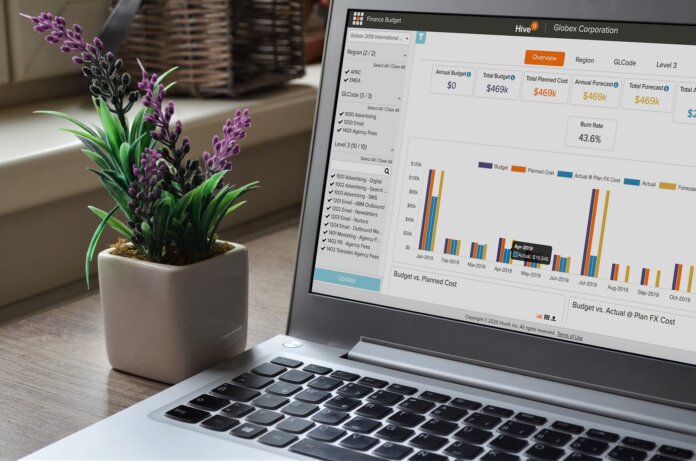Hive9, a provider of cloud-based marketing performance management software, has announced a significant improvement in marketing planning and financial management capabilities for a Fortune 500 energy provider.
The undisclosed company, a major player in the clean energy and oil and gas markets, was previously using spreadsheets to manage marketing plans and budgets for multiple product lines across 40 countries. With Excel, regional planning managers would manually enter data and send different versions of spreadsheets back and forth among teams. However, they found it “very hard to consolidate” all their respective information, which they centrally collated annually for the upcoming year’s planning season, according to a marketing leader at the company.
Calling this “highly manual process” essentially “a nightmare,” he details some of the problems they’d face: data inaccuracies, time delays and out-of-date numbers, preventing clear visibility of plans and how they tied to budgets.
“We didn’t really know what was going on in the various teams and regions,” he explains.
Now, having used the Hive9 platform for more than a year on a global scale, their teams have improved collaboration and visibility around planning, as well as more effectively managed and reconciled budgets and expenses with finance.
“Before, I would know what the plans are globally once a year,” he says. “So, in Q4, I would know what the plan is for next year, but I would have zero visibility during the year of how plans changed.”
Now, teams are able to clearly see what’s been happening throughout the year in the context of their overall strategy – a particularly welcome change for 2020, especially, given the changing energy landscape and global economic uncertainty. For example, when the pandemic necessitated sudden budget changes, the marketing and finance leaders, in turn, had to “rework all their plans,” he explains.
“Local and regional teams were able to do that a lot more quickly,” he says, “and then, centrally, we were able to pull together a complete overview for the business, saying, ‘This is what the new balance looks like.’”
Additionally, with the use of scenario planning, he notes, a team in one region was able to link their plans up with two types of potential budgets in the future – a “base budget” or a “rebound budget” – and have a clear visualization of either scenario.
“Being able to do that helped us prepare for a rebound,” he says.
Having reduced headaches, wasted time, and confusion surrounding important data across many operating units, the company is on a path to continuous marketing performance management improvement.
The contact adds, “It takes a lot less time for the marketers to plan now.”
Read the full case study here.




